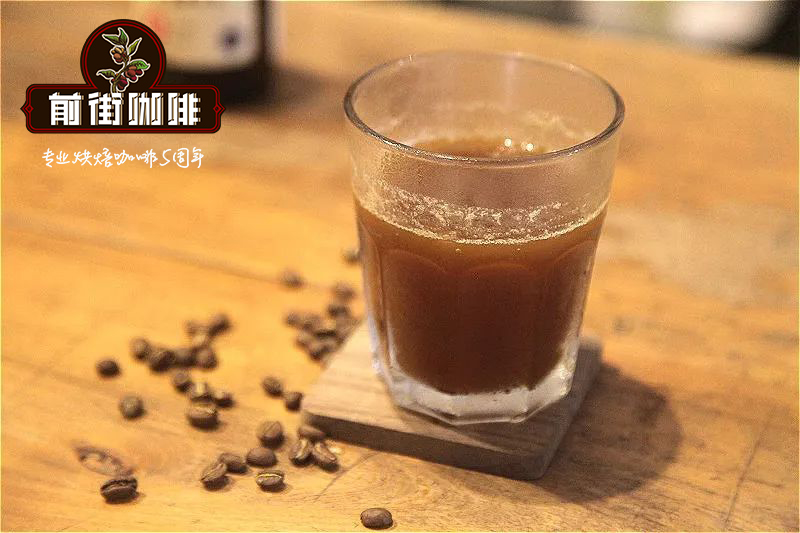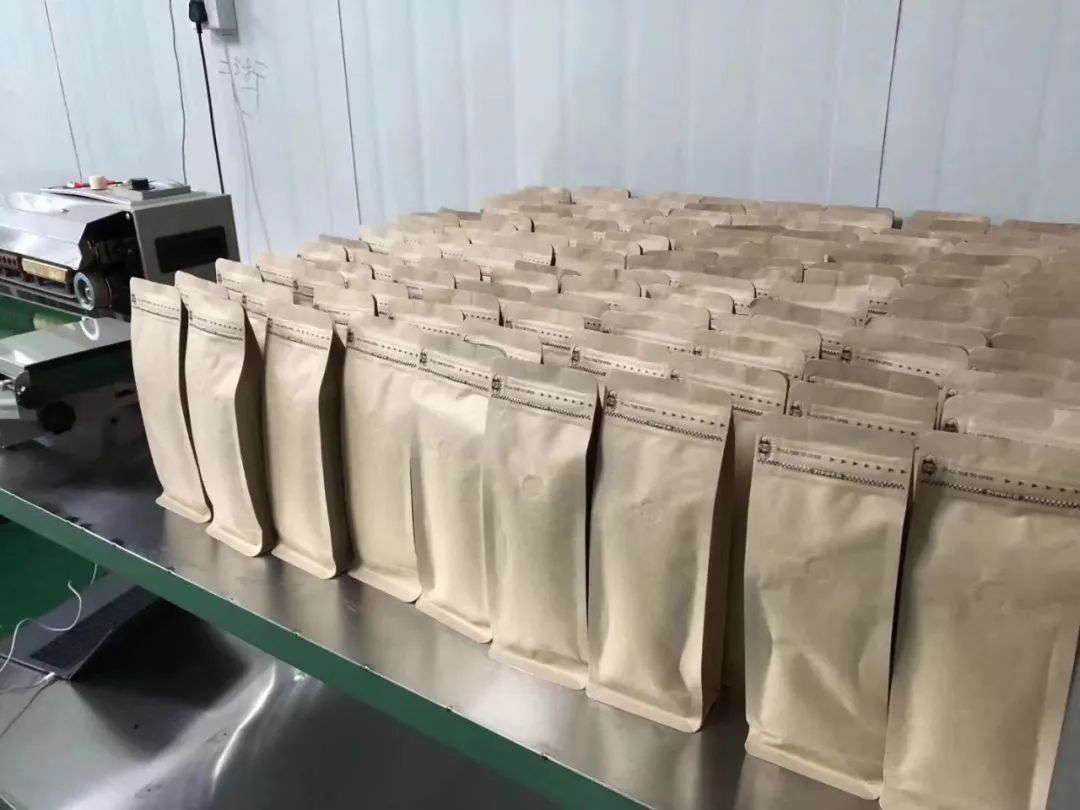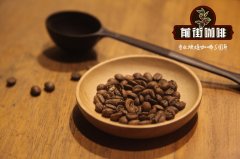Cerro Villa, Costa Rica, black honey coffee hand-made reference _ which brand of Costa Rican black honey is good

Professional coffee knowledge exchange more coffee bean information please follow the coffee workshop (Wechat official account cafe_style)
'Costa Rica'
Costa Rica is bordered by the Caribbean Sea to the east and the Pacific Ocean to the west, as the country's name means in Spanish: a fertile coast. Located in the south of SanJos é, the capital of Tarasu, Costa Rica is one of the most valued coffee growers in the country. Tarasu (Tarrazu) is one of the major coffee producers in the world. Coffee farming is an extremely important industry in Costa Rican agriculture. The coffee beans produced at its high latitudes are famous in the world, with mild taste, high acidity, aroma and rich texture, so they are very popular. The raw beans are green and have large grains as a whole, all of which belong to Arabica species.
The historical origin of the development of the local coffee industry
The Costa Rican coffee industry started early, with the first batch of coffee exported to Colombia and Chile in 1820. In 1854, an importer and exporter, with the assistance of William Lyon, captain of the British merchant ship the Sovereign, successfully exported 100 pounds of coffee to London, which became popular and was praised by the British aristocracy as the "golden bean" from Costa Rica. Since then, coffee has become the main cash crop in Costa Rica and changed the humble status of the former Spanish colonies. Increasingly wealthy coffee farmers send their children to Britain for further study and return to their hometown to become doctors and engineers. Coffee farmers have a high status in Colombia. In 1897, the citizens of San Jose, the capital, witnessed the completion of the National Theater donated by coffee tycoons. Coffee wealth brings stability to Costa Rica's politics, economy and democracy, which is rare in Central American countries. In addition, Colombia has a law that only allows the planting of Arabica, and Robusta is a "contraband" in its territory, which is also the only initiative seen in the world. Costa Rican coffee, which is quite mild and supple, contains sour, sweet and chocolate bitterness, without the sharpness of Guatemala and a great balance. It is the classic flavor of gourmet coffee.
The seven major coffee producing areas in Costa Rica are as follows: the Turialva Valley, the Central Valley, the Western Valley, the three Rivers region, Brenka, Orosi and Tarasu. Among them, the Central Valley, Tarasu and Sanhe producing areas are the most famous.
In principle, the quality of coffee sloping towards the Pacific is better than that facing the Atlantic. In the two-⊙⊙ seven-year Costa Rica "extraordinary Cup" competition, the champion farm "Serobado" is located in the Tarasu producing area south of San Jose, but the Central Valley area also performed well, with two or four from the city of Naranjo, where the three Rivers District seems to have been left out.
Laminita Farm in Tarasu has established a world-class reputation for its strict quality management, covering most of the European and American markets for more than half a century, making it the most famous coffee farm in the world. "Raminita" means "small gold mine". Before the Spanish colonization, the Indians used to dig gold in the present farm location, which can be described as a blessed land. Raminita produces about 1 million pounds of coffee beans a year, and after removing the turnips (more than 70 percent eliminated), only 290000 pounds of high-end products are sold to the boutique market, which is not a false reputation. The coffee at the estate is famous for its sour aromas of apple and citrus, rich milk and truffles, and a delicate taste of silk, at an altitude of about 1,200 meters above sea level. In addition, Sanhe District is also a famous producing area, located in the Ilasu volcano not far east of the capital.
However, in recent years, the urban area has gradually extended to the suburbs, and agricultural land has been sold to developers one after another, resulting in a sharp decline in coffee production in Sanhe District, almost half of which is contracted by Starbucks, which is not easy to buy on the market. The famous farm "Cerro Manor" in this area has been persisted since 1857. It has a long history, bright sour fruit, soft but not sharp, and sweet and charming taffy with nuts and flowers, which is the characteristic of coffee in this area. Costa Rica's coffee technology is very high, regardless of breeding, planting or post-processing (washing, half-sun, "sweet as honey" treatment) are worthy of reference by various producing countries. However, the supply of famous producing areas falls short of demand, and criminals often mix them with other second-rate producing areas as fine beans, and the producing areas a hundred miles away from Tarasu also dare to fish in troubled waters in the name of Tarasu, so they have to be careful.
[coffee beans] Costa Rican coffee
The coffee produced in Costa Rica is light and sweet in flavor and pleasant in flavor. The excellent Costa Rican coffee is called SHB.
The coffee beans here have been carefully processed, and that is why there is high-quality coffee. Costa Rican coffee is full of Arabica beans, washed with water, its style is bright, fragrant, clear as wind chimes swaying in the breeze, mild acidity and sweetness. Because of the sweetness, even if the coffee gets cold, it tastes very good, which is a major feature of Costa Rican coffee.
Analysis of Black Honey Coffee brewing in Costa Rica
Hand punch reference
Use key home filter cup, 15 grams powder 32 grams of water steaming for 30 seconds, 90-92 degrees water temperature extraction, 1:17, fine grinding small Fuji 3.5 second water injection to 110ml cut off, wait for water drop and then slowly water injection, uniform speed, the water level should not be too high, again water injection to 255ml stop, extraction time 2:15 seconds-rich sour sweetness, we can fine-tune according to their own taste.
END
Important Notice :
前街咖啡 FrontStreet Coffee has moved to new addredd:
FrontStreet Coffee Address: 315,Donghua East Road,GuangZhou
Tel:020 38364473
- Prev

What's the taste of washing Yunnan Baoshan tin card?
"are you crazy in front of the street? Hurriedly place an order, "an old fan got the message and contacted us immediately. Yes, I didn't expect Qianjie to be so crazy. Really, for the first time, package delivery, package to asthma. In fact, at the beginning, I really did not think that this event was so popular that only four hours after the first day of the event, there was a minor accident, and the inventory was photographed.
- Next

Suggestion of coffee hand brewing parameters in Aguirate Manor, Costa Rica _ Aguirette Family Coffee Story
Professional coffee knowledge exchange more coffee bean information please follow the coffee workshop (Wechat official account cafe_style) Costa Rica Aguilet three brothers / Costa Rica west of the Pacific Ocean, east of the Caribbean Sea, Costa Rica means "fertile coast" in Spanish. Because Costa Rica is located in a volcanic area like Sumatra in hard Nicaea.
Related
- Detailed explanation of Jadeite planting Land in Panamanian Jadeite Manor introduction to the grading system of Jadeite competitive bidding, Red bid, Green bid and Rose Summer
- Story of Coffee planting in Brenka region of Costa Rica Stonehenge Manor anaerobic heavy honey treatment of flavor mouth
- What's on the barrel of Blue Mountain Coffee beans?
- Can American coffee also pull flowers? How to use hot American style to pull out a good-looking pattern?
- Can you make a cold extract with coffee beans? What is the right proportion for cold-extracted coffee formula?
- Indonesian PWN Gold Mandrine Coffee Origin Features Flavor How to Chong? Mandolin coffee is American.
- A brief introduction to the flavor characteristics of Brazilian yellow bourbon coffee beans
- What is the effect of different water quality on the flavor of cold-extracted coffee? What kind of water is best for brewing coffee?
- Why do you think of Rose Summer whenever you mention Panamanian coffee?
- Introduction to the characteristics of authentic blue mountain coffee bean producing areas? What is the CIB Coffee Authority in Jamaica?

